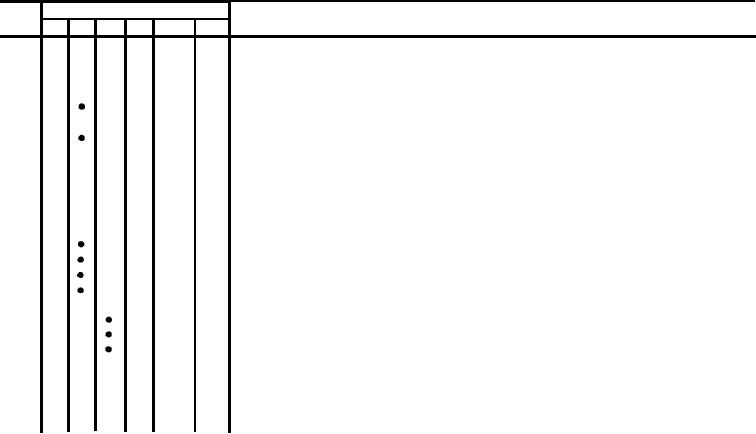
TM 5-3805-257-14&P
K-3. Organizational Preventive Mainte-
plastic material.
nance Checks and Services
d. Watch for and correct anything that might cause a
a. Perform the checks and services at the intervals
problem with the semitrailer. Some things to watch for
are :
shown in table K-2.
(1) Do the (Q) checks and services once each three
(1) Bolts, nuts, and screws that are loose, missing,
months.
bent, or broken.
(2) Do the (S) checks and services twice a year, or
(2) Welds that are bad or broken.
each six months.
(3) Electric wires and connectors that are bare,
(3) Do the (A) checks and services once each year.
broken, or loose.
(4) Do the (B) checks and services once each two
e. You should know how fluid leaks affect the status of
years.
your equipment. Learn and be familiar with the following
(5) Do the (H) checks and services at the hour in-
definitions of the types/classes of leakage.
terval listed.
Leakage definitions for PMCS are:
(6) Do the (MI) checks and services when the
Class I
Seepage of fluid (indicated by wetness or discoloration)
not great enough to form drops.
mileage of the vehicle reaches the amount listed.
Leakage of fluid great enough to form drops but not
Class II
b. If the Scooploader doesn't work properly and you
enough to cause drops to drip from the item being
can't see what is wrong, troubleshoot it with the instruc-
checked/inspected.
tions in this manual or notify your supervisor.
Class III
Leakage of fluid great enough to form drops that fall
from the item being checked/inspected.
WARNING
CAUTION
Drycleaning solvent SD-2, used to clean parts, is
Equipment operation is allowable with minor
potentially dangerous to personnel and property.
leakage (Class I or II). Of course, consideration
Do not use near open flame or excessive heat.
must be given to the fluid capacity in the item/-
Flash point of solvent is 138 F.
system being checked/inspected. When in
c. Make cleanup a part of your preventive mainte-
doubt, notify your supervisor.
nance. Dirt. grease, oil, and debris may cover up a serious
problem. Use drycleaning solvent (SD-2) to clean metal
Class III leaks should be corrected before releas-
surfaces. Use soap and water when you clean rubber or
ing equipment for operation.
Table K-2 Organizational Preventive Maintenance Checks and Services
Legend
Q-Quarterly
A-Annually
H-Hours
S-Semiannually
B-Biennially
MI-Miles
Interval
Item
ITEM TO BE INSPECTED
Procedure
No Q
S
A
B
H
MI
NOTE
Perform operator/crew PMCS prior to or in conjunction with organizational PMCS.
1
50
FUEL TANK
Drain water and sediment.
WHEELS AND TIRES
2
Tighten lug nuts to torque of 320 lbs-ft.
3
V-BELTS
Check for proper belt adjustment Proper adjustment permits inch deflection midway between
4
BATTERIES
WARNING
Do not smoke or allow open flame in vicinity while checking or filling battery The battery
generates hydrogen, a highly explosive gas.
a. Remove corrosion from clamps and posts.
b. Check for obvious defect, such as cracked case, burnt, broken or loose battery terminals
c. Tighten loose cables and mountings
d. Check specific gravity ofelectrolyte in each cell (See TM 9-6140-200-14).
5
COOLING SYSTEM
a. Check radiator for damage or obstructions. Remove any debris which would restrict air flow
b. Inspect hoses, lines, oil cooler and water pump for evidence of leaks
c. Check antifreeze protection (See TB 750-651)
6
200
a. Inspect hoses. lines, tank and fittings for leaks
200
b. Check parking brake for proper operation. Adjust as necessary
200
c. Check power brake fluid level Add as required.
200
d. Check brakes for wear
K-3

